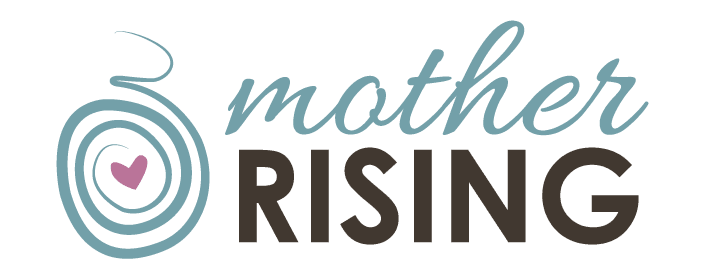The third stage of labor is everything that happens after the baby is born, the part of childbirth that doesn’t make it to the movies. The delivery of the placenta, the most taboo part of childbirth, encompasses the third stage of labor.
(Psssttt. There’s a picture of a placenta all the way at the bottom of this post. Check it out!)
Third Stage of Labor – The Most Taboo Part of Childbirth
Compared to the rest of labor, the third stage of labor is the shortest and easiest of all the stages. Labor is over, your baby has arrived, and now everything is over. Or is it? 😉
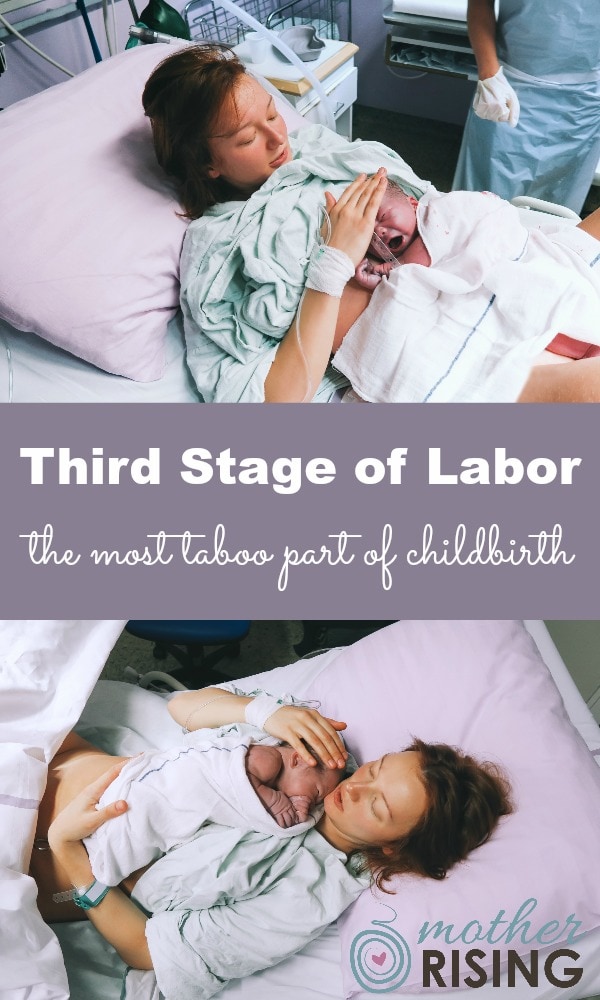
What is the third stage of labor?
The first stage of labor is long, strong, and close together contractions that dilate the cervix to 10 cm. The majority of childbirth is happens in the first stage of labor, which is broken down into three parts – early, active, and transition. The second stage of labor is pushing, and birth of the baby.
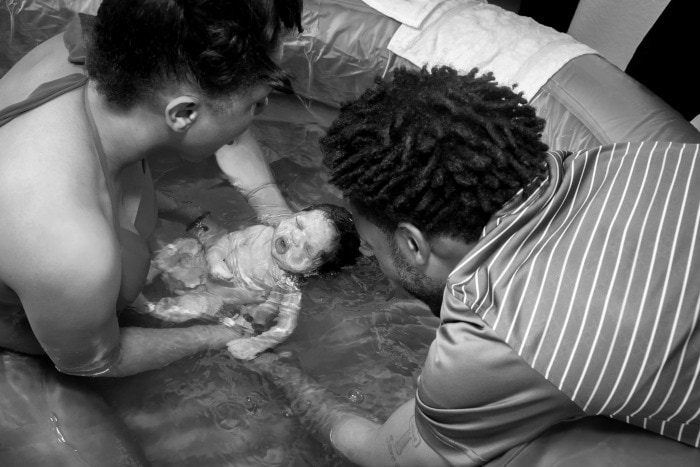
The third stage of labor is the delivery of the placenta. Once the placenta is out of the body a woman is no longer in labor or pregnant. The third stage of labor ends after the placenta is delivered. Horray!
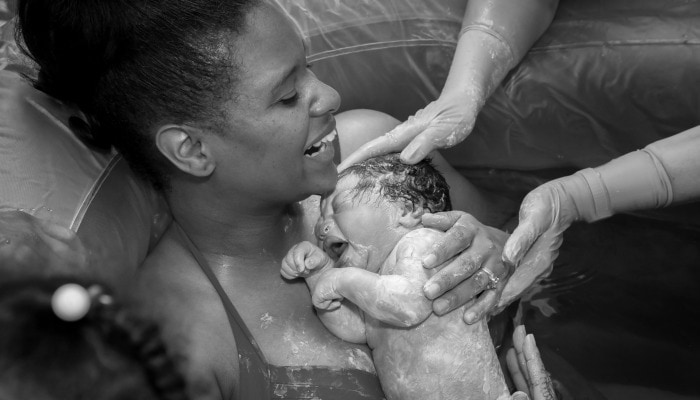
How long is the third stage of labor?
The third stage of labor is the shortest stage, typically lasting less than 20 minutes.
After the birth of a baby, parents are part shocked by what’s just happened and part enamored by this new person in their arms. Mothers kiss, inspect, touch, and talk to their babies, while simultaneously attempt to process the enormity of what just happened.
While all this is going on, peak amounts of oxytocin course through the bodies of both mom and baby. Oxytocin, the feel good hormone of love and bonding, is also what causes the contractions of labor. It makes sense that at this point, women begin to feel contractions all over again.
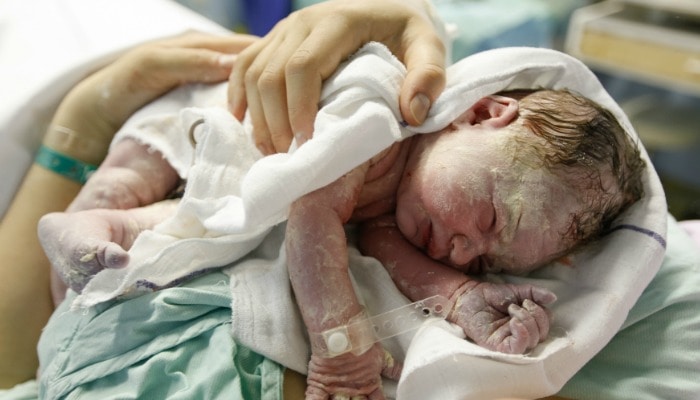
Does the third stage of labor hurt?
After the marathon of childbirth, the muscle used most in the whole ordeal, the uterus, is very tender and sore. When contractions pick back up after birth, they definitely don’t feel good, are noticeable, but are not nearly as intense labor. Yay?
Because a small human just passed through the vagina, it definitely doesn’t feel pleasant when the placenta passes through as well. However, since the placenta has no bones and is much smaller than a baby. It’s surprisingly not a difficult thing to do. I would describe the pain of the delivery of the placenta as “stingy”.
Usually, while a care provider is managing this last part of labor, they’re between the knees making sure the placenta is delivered on its own, in one piece, and in a timely manor. Their biggest concerns are preventing or managing postpartum bleeding and assessing any damage to the ladybits. A nurse or doula may suggest taking deep breaths or focusing on the baby while the placenta comes out with a plop. (Seriously, it plops.)
Once the placenta separates from the uterus and is delivered, in its place is a large wound where the placenta was previously attached. If the uterus does not contract down, this wound bleeds freely. Too much bleeding is called postpartum hemorrhage and is the leading cause of maternal mortality in low-income countries, and the primary cause of nearly one quarter of all maternal deaths globally. (SOURCE)
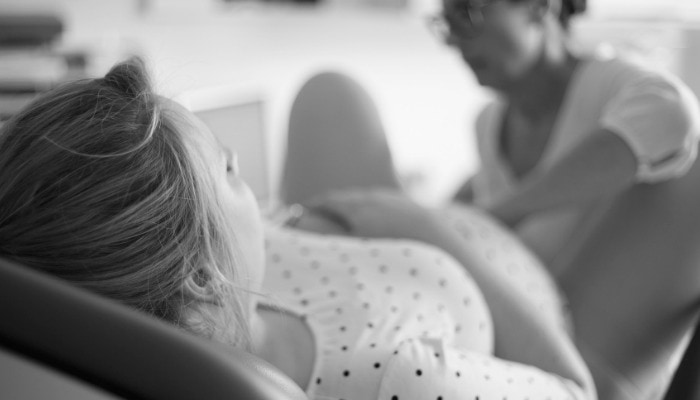
Uterine Massages – A Necessary Evil
Enter the uterine “massage”.
It’s at this point that all moms receive their very first uterine massage. Let me be the first to tell you that this is not a massage by any normal definition of the word. It does not feel good, but despite the pain it brings, has great benefits.
A uterine or fundal massage is when a care provider pushes on the abdomen, right at the belly button, to feel and assess the uterus. After delivery of the placenta the uterus should be firm and about the size of a grapefruit. If not, sometimes a firm and vigorous massage helps it contract down and firm up.
Ladies, uterine massages are uncomfortable for most and painful for some. The uterus is so tender after all the work it just did. Some care providers suggest focusing on the breath, or the baby. But honestly, I’ve always found it difficult to focus on my sweet baby while simultaneously trying not to reflexively kick my care provider in the face.
After my first birth, sitting on my hands was helpful as I was reflexively pushing my midwife away. For subsequent births, I tolerated the first uterine massage, but since I was trained on the procedure, I did my own uterine massages after that. Be encouraged, however, because I think most women handle uterine massages more gracefully than I. 😉
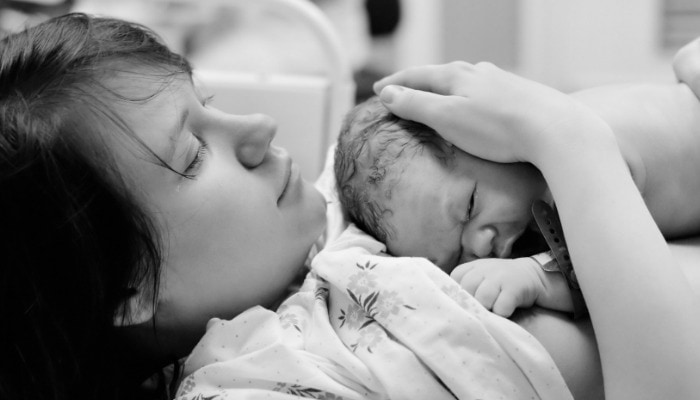
Postpartum Pitocin – Necessary for All?
A common procedure during the third stage of labor is the administration of pitocin to all women to help prevent postpartum hemorrhage. Pitocin is the synthetic version of oxytocin, but solely causes contractions without all the extra warm and fuzzies.
When learning this information, parents are shocked. Are parents shocked that care providers want to reduce excessive postpartum bleeding? No.
Some expectant parents are shocked because their birth plans specifically state their preference to not use pitocin in labor. They had no idea they needed to address pitocin administration right after birth as well.
Other new parents are shocked because, while they were consumed with meeting their new baby for the first time, they had no idea pitocin was put in their IV.
Sure, I would love for there to be less use of pitocin, especially for low-risk women. One of the biggest reasons I think we should not give pitocin to all women across the board is because of the link between pitocin and postpartum depression. However, to be honest, I have bigger issues with the lack of informed consent and shared risk between care providers and parents.
Research has shown that the more a woman is part of the decision-making process during birth, she will be happier about the outcome. No matter what happens! She will also be more likely to have a vaginal delivery! (SOURCE)
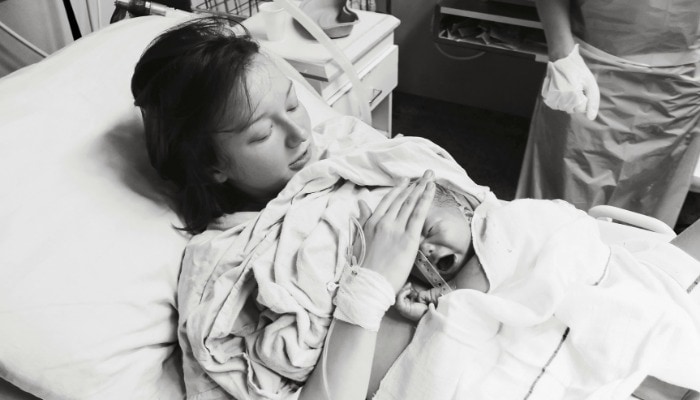
Skin-to-Skin, Swaddling, and Baby Separation
During the third stage of labor it is critical for babies to stay with their mothers.
When I first became a doula in 2007, cords were immediately cut and babies were taken to a in-room warmer to be assessed, measured, and cleaned before they were allowed to see their mothers. Some babies, however, were lucky and had a couple of minutes of skin-to-skin before they were whisked away.
What I saw years ago was actually an improvement to going even further back, where babies were taken out of the room, and for longer periods of time. Some mothers weren’t even awake for their births! (A former co-worker of mine once told me that after she woke up after giving birth she picked up the phone and asked the nurse if she had a boy or girl. Wrap your mind around that one.)
At least these 2007 babies were kept in the same room as mom. Yay?
In recent years, there has been a shift in my community to letting babies stay with their mothers, skin-to-skin, for the first hour or so after birth. It has been such a joy to see the benefits of this first hand. Babies are more calm, breastfeeding is more likely to happen within the first hour, glucose levels are more stable, and babies stay warmer.
Babies should not be separated from their mothers. Just because it’s something we’ve always done, doesn’t mean it’s what we should continue to do.
And all the mamas said amen.
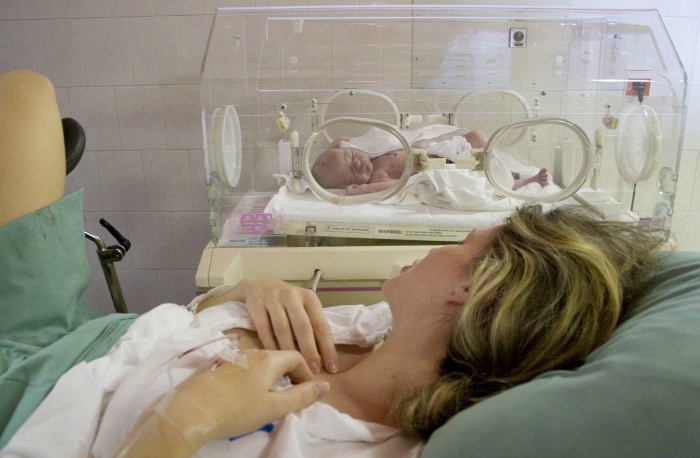
Delayed Cord Clamping – Not Just a Fad
When babies stay with their mothers during the third stage of labor, another opportunity presents itself – delayed cord clamping.
Delayed Cord Clamping is the practice of postponing cutting a newborn’s umbilical cord instead of immediately cutting it after birth and is a best practice for moms and babies immediate postpartum.
To some, delayed cord clamping may seem like a “crunchy” thing to do or one of those “birthing fads”. However, if you think about it, delayed cord clamping was normal protocol long before women could be even considered crunchy.
In fact, humans are the only mammals that immediately cut the cord after birth. Dogs, cats, horses, elephants, etc. all seem to have better things to do than to sever the umbilical cord after their baby is born.
- Babies that receive delayed cord clamping have 40% more blood volume compared to babies that received immediate cord clamping. (SOURCE)
- Babies that received delayed cord clamping are less likely to be iron deficient, which is a critical component to neurological development.
For more information make sure you check out my post on delayed cord clamping.
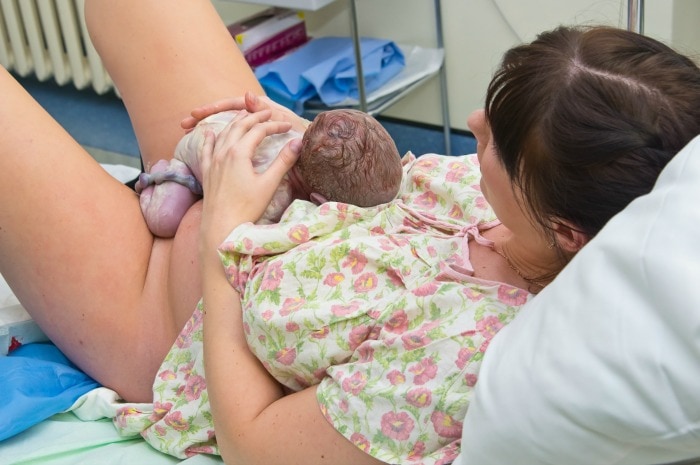
Third Stage of Labor – The Most Taboo Part of Childbirth
You’ve read this entire post all about how childbirth concludes. You’re amazing! Your reward? A picture of a placenta, the unsung hero of childbirth.
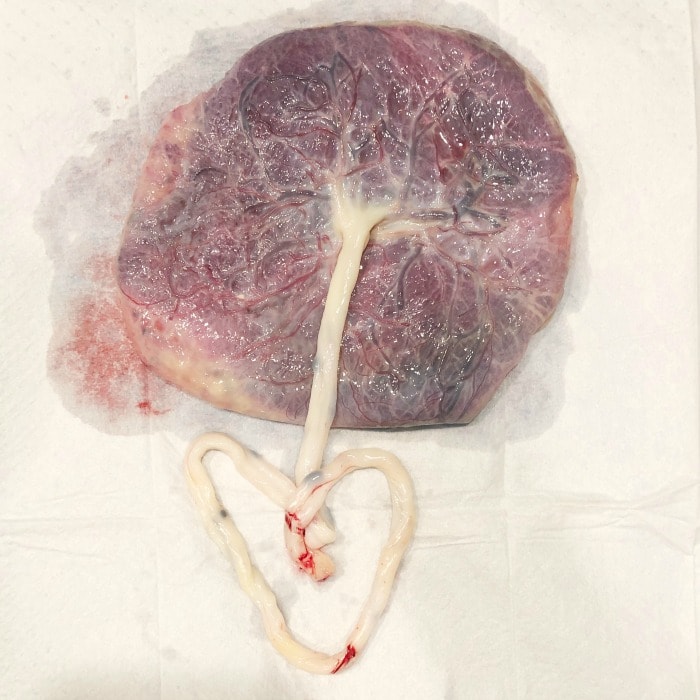
You know you love me. And hey, it could be worse. I could show you pictures of mucus plugs. 😉 (You knooooow you want to click that link.)
